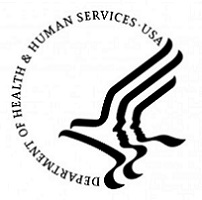 Health information technology developers that provide 90 percent of electronic health records used by U.S. hospitals and five largest healthcare systems agree to implement three commitments to improve the flow of health information
Health information technology developers that provide 90 percent of electronic health records used by U.S. hospitals and five largest healthcare systems agree to implement three commitments to improve the flow of health information
The U.S. Department of Health and Human Services (HHS) (@HHSGov) Secretary Sylvia M. Burwell announced that companies that provide 90 percent of electronic health records used by U.S. hospitals, the nation’s five largest private healthcare systems, and more than a dozen leading professional associations and stakeholder groups have pledged to implement three core commitments that will improve the flow of health information to consumers and healthcare providers. Secretary Burwell made the announcement at the Health Information Management Systems Society conference attended by more than 40,000 health IT professionals, clinicians, executives, and vendors from around the world. The three commitments are:
- Consumer Access: To help consumers easily and securely access their electronic health information, direct it to any desired location, learn how their information can be shared and used, and be assured that this information will be effectively and safely used to benefit their health and that of their community. Many of the biggest health IT developers have committed to using standardized application programming interfaces and a single shared standard for communicating with one another, Health Level 7 – Fast Health Care Interoperability Resources (FHIR®), so that user-friendly resources, like smartphone and tablet apps, can quickly be made market-ready and compatible with one another. These advances will make it easier for consumers to access their test results, track progress in their care, and communicate with their providers.
- No Information Blocking: To help providers share individuals’ health information for care with other providers and their patients whenever permitted by law, and not block electronic health information (defined as knowingly and unreasonably interfering with information sharing). The report to Congress by the Office of the National Coordinator for Health IT (ONC) discussed the prevalence of information blocking.
- Standards: Implement federally recognized, national interoperability standards, policies, guidance, and practices for electronic health information, and adopt best practices including those related to privacy and security. Many of these market leaders are embracing ONC’s Interoperability Standards Advisory—a coordinated catalog of existing and emerging standards and implementation specifications. This guidance is updated annually in order to keep pace with developments in the health IT industry. By identifying current best practices in standards, this advisory will assist healthcare providers to more easily collaborate with one another and share data across “interoperable” electronic health records.
“These commitments are a major step forward in our efforts to support a healthcare system that is better, smarter, and results in healthier people,” HHS Secretary Sylvia M. Burwell said. “Technology isn’t just one leg of our strategy to build a better healthcare system for our nation, it supports the entire effort. We are working to unlock healthcare data and information so that providers are better informed and patients and families can access their healthcare information, making them empowered, active participants in their own care.”
Currently, electronic health information flows only in pockets of the healthcare system and business practices can inhibit data sharing. Even when electronic health information is shared, it can be underutilized and difficult to access due to hard-to-use technology or the use of different standards. The commitments by health IT developers who provide electronic health records to the vast majority of the inpatient market, healthcare systems who serve patients in 46 states, and leading professional associations and stakeholder groups will help lead to a future where electronic health data is shared seamlessly and is easily accessible when and where it matters most to providers and consumers. To see a full list of individual organizations that have made commitments and their pledges, visit this website.
“The future of the nation’s health delivery system is one where electronic health information is unlocked and shared securely, yet seamlessly, to put patients at the center of their own care,” said Karen B. DeSalvo, M.D., M.P.H., M.Sc., national coordinator for health information technology. “The broad agreement by leaders in health and health IT across the nation brings us much closer to our vision for a truly learning, connected health system.”
The commitments announced, together with the Federal Health IT Strategic Plan 2015-2020 and final Connecting Health and Care for the Nation: A Shared Nationwide Interoperability Roadmap, are designed to put the nation on a path to real, sustainable progress in the near-term to achieving better care for patients as a result of better information flow. As of 2014, nearly all hospitals and three-quarters of physicians use certified electronic health records. This announcement is a major milestone in assuring those systems talk to one another—a critical foundation for precision medicine and a healthcare system where providers are paid for quality and collaboration.
